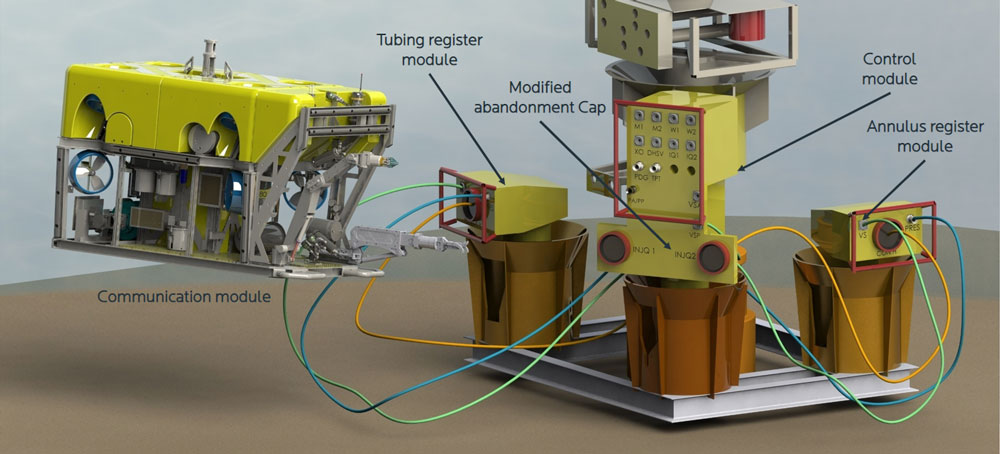SubseaMonitoring
Temporary Abandoned WellsAbandoned Well Monitoring System with Wet Christmas Tree
The Challenge
In 2016, the Brazilian agency responsible for regulating the oil and gas market published ANP Resolution No. 46 and the Technical Regulation for Well Integrity Management System (WIMS). This regulation applies to all oil wells, from the design phase to plugging and abandonment.
WIMS defines the essential requirements and the minimum standards of operational safety and environment preservation to be met by contract operators in Brazil. The regulation aims at an inspection program of the un removed installations.
In the case of abandonment, at least two independent Well Safety Barriers (WSB) must be established and checked. There is currently no equipment on the market that fully complies with the WIMS resolution for wells with disconnected lines.
Most technological solutions for monitoring abandoned wells allow the measurement of parameters within the abandoned well, but fail to meet the challenges of WSB element integrity checking in compliance with the WIMS requirement.
Our Solution
A system that allows monitoring through a control module, by means of Wet Christmas Tree (WCT) chamber pressurization / depressurization, hydrocarbon detection and leak measuring by control valves.
The system measures the WTC chambers pressure, safely collecting the hydrocarbons and, and if required, actuating WTC valves.
The control valves and WTC chambers are accessed by the Vertical Connection Module mandrel where an abandonment cap will be installed with the control module on the top. An isolation valve is installed in the control module, as WSB redundancy.
Main Advantages
- ANP 2016/46 full compliance: Indefinite postponement of permanent abandonment (better logistics);
- Low-cost solution: Rigless operation;
- Applicable with or without XTree;
- Independent of the integrity of the XTree and well sensors;
- Low Technological Risk: Use of field proven technologies;
- High Reliability: Additional WSB;
- Variable communication alternatives.
